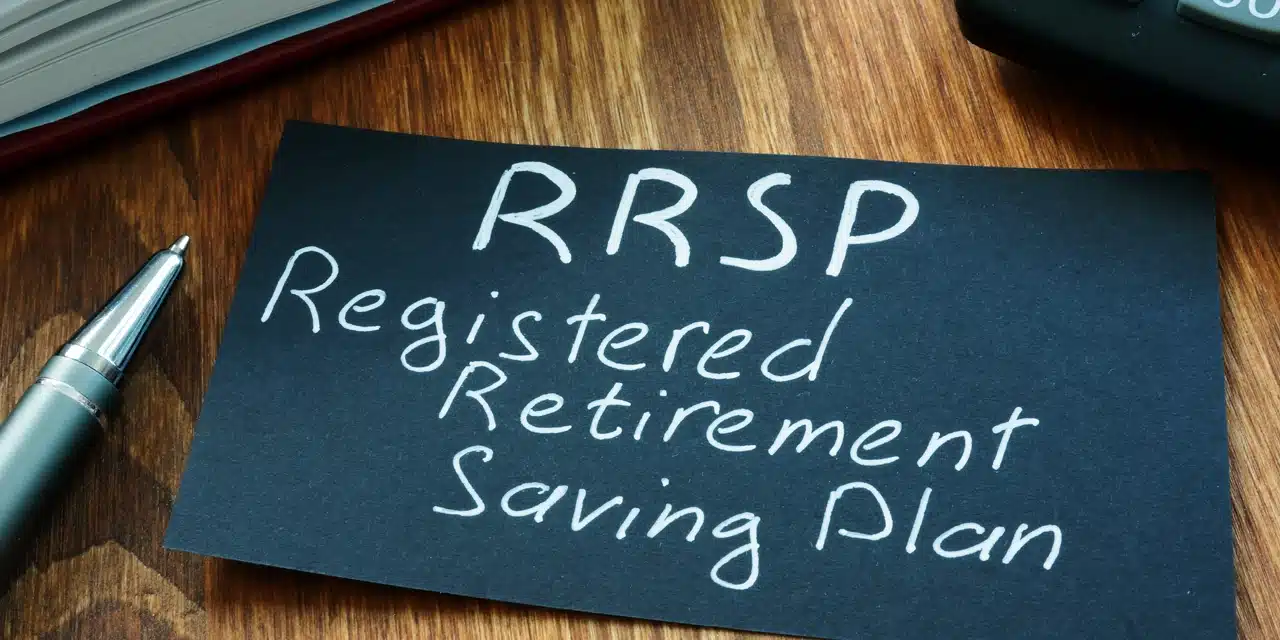‘Better start investing in your RRSPs.’ ‘Have you set up your RRSPs yet?’ ‘It’s RRSP season!’ If you’re new to investing you probably hear plenty of lines like those from advertising, friends, and even your own families. That’s because in Canada, Registered Retirement Savings Plans (RRSPs) are among the most popular tools people use to save for their retirement.
But, what are RRSPs, what are they good for, and what are their limits?
In this article we will explain how RRSPs work, what their advantages and drawbacks are, and lay out what the RRSP contribution limits and deadlines mean for your savings plans.
What is a Registered Retirement Savings Plan?
A Registered Retirement Savings Plan (RRSP) is a type of investment account available to Canadian residents. It is a retirement savings and investing vehicle available to employees and self-employed individuals in Canada. RRSPs are registered with the Canadian federal government and provide tax advantages to help individuals save for their retirement.
Benefits of an RRSP
Put simply, an RRSP gives you a tax break as you save for your retirement. The money you contribute to your RRSP account each year is exempt from income tax on the year it was contributed. If you hold investments such as ETFs in your RRSP, any capital gains or income paid by those investments is also not taxed so long as that money is still held in your RRSP account.
Each year the federal government sets a contribution limit and a deduction limit for RRSPs.
RRSP Contribution Limit
The RRSP contribution limit sets the maximum amount you as a Canadian taxpayer can put into your RRSP account each year. That number is specific to each individual, and is determined by when you began earning income as well as any extra contribution room you may have had from the last year. If you contribute more than your RRSP contribution limit, you will be subject to a penalty tax of 1% per month on the excess amount until it is withdrawn.
RRSP Deduction Limit
The deduction limit is far more important to most investors, as that is the amount you can deduct on your income tax. That limit is either 18% of your earned income from the previous tax year, or the hard limit of $31,560 for 2024 – whichever number is lower. The contribution deadline to claim for the 2023 tax year is March 1st of 2024. Any money contributed after March 1st can be claimed in your 2023 tax year filings.
RRSP Deduction Limit by Year
| 2024 | $31,560 |
| 2023 | $30,780 |
| 2022 | $29,210 |
| 2021 | $27,830 |
| 2020 | $27,230 |
| 2019 | $26,500 |
| 2018 | $26,230 |
| 2017 | $26,210 |
| 2016 | $25,370 |
The limits and drawbacks of an RRSP
RRSPs are designed to incentivize long-term savings. The tax deductions they offer would be more accurately described as tax deferral. That’s because any money withdrawn from an RRSP will be taxed. If you take the money out before you turn 71, the withdrawal is subject to a withholding tax, which is determined by the amount you pay and where you live.
That means for shorter-term savings goals, such as buying a house, you may want to consider a different kind of registered account such as a Tax Free Savings Account (TFSA). However in this example the CRA does allow first time home buyers to borrow up to $35,000 from their RRSP to be used towards a downpayment.
When you turn 71 your RRSP converts to a Registered Retirement Income Fund (RRIF), at which point they are subject to mandatory withdrawals on a schedule set by parliament. When that money is withdrawn it is taxed as income.
The other potential drawback of an RRIF is that the mandatory withdrawals may force you to sell some of the investments you hold in that account. Income-generating investments held in an RRSP can eventually help offset those withdrawals when the RRSP becomes an RRIF.
Despite these potential limitations and drawbacks, the short-term tax incentives of an RRSP make them a very popular and useful tool for many Canadian investors. It’s important, however, to learn how RRSPs work, what their deadlines are, and what they can and can’t be used for.
How do you Open a RRSP Account?
So, you’ve decided a RRSP is the right fit for you. Time to open an account! Opening a RRSP in Canada is a straightforward process. Many employers offer Group RRSPs, but if your employer does not, you can still enroll in an RRSP at almost any financial institution. To open an RRSP, you need to choose a financial institution that offers RRSPs and fill out an application form. You can select the mix of investments you want, such as international and domestic stocks, bonds, and real estate, and start investing.
If you are in a Group RRSP, your employer will automatically deduct your contribution from each paycheque. Otherwise, you need to link a checking or savings account and remember to make contributions. To avoid forgetting, it’s best to set up an auto-deposit or a calendar reminder. Once you have opened an RRSP, you can make annual contributions up to a certain amount, and any interest or investment income earned within your RRSP will not be taxed until you withdraw that money 15.
Registered Retirement Savings Plan FAQs
Who can open an RRSP?
Anyone who is a Canadian citizen, has earned income and files a tax return in Canada can open an RRSP.
When is the contribution deadline for RRSPs?
The deadline for contributing to your RRSP for a given tax year is usually March 1st of the following year.
What happens if I over-contribute to my RRSP?
If you contribute more than your RRSP contribution limit, you will be subject to a penalty tax of 1% per month on the excess amount until it is withdrawn.
Why should I invest in an RRSP if I have a pension fund?
While a pension fund can provide retirement income, an RRSP can provide additional retirement savings and tax benefits. Additionally, if you leave your employer before retirement, you can take your RRSP with you, whereas your pension may be locked in 3.
How much can I contribute to my RRSP?
Your RRSP contribution limit is based on your earned income from the previous year, up to a maximum amount set by the government. For the 2024 taxation year the limit will be $31, 560 1.
How can I determine my annual RRSP contribution limit?
Your RRSP contribution limit is based on your earned income from the previous year, up to a maximum amount set by the government. You can find your contribution limit on your Notice of Assessment from the Canada Revenue Agency.
Are ETFs eligible for RRSP?
Yes, ETFs (Exchange-Traded Funds) are eligible for RRSPs (Registered Retirement Savings Plans) 12346. In fact, many income-generating ETFs can be held inside of RRSPs and RRIFs (Registered Retirement Income Funds).
To learn more about how ETF investments can fit into both RRSPs and TFSAs, click here.












